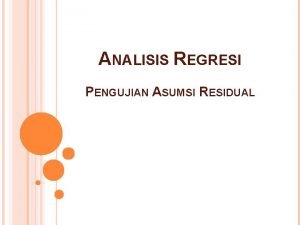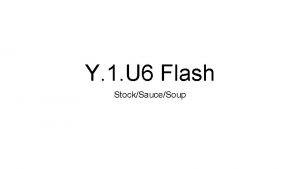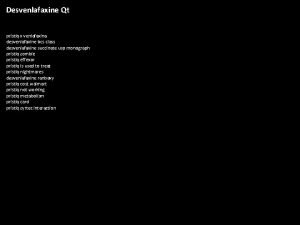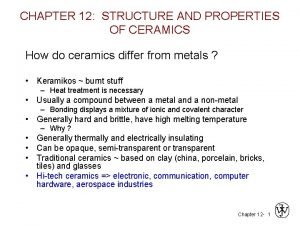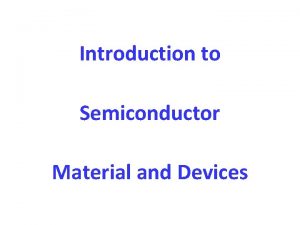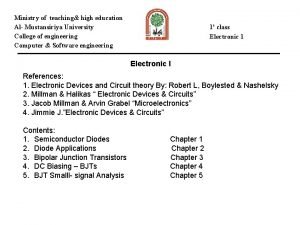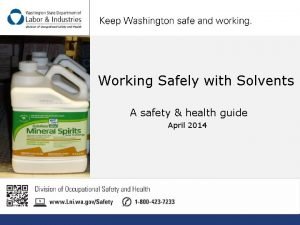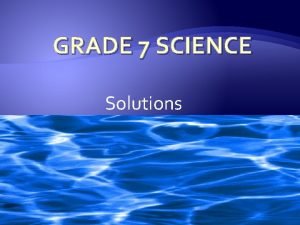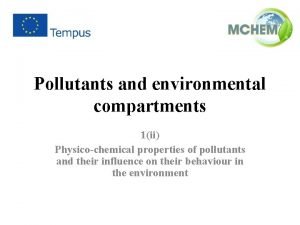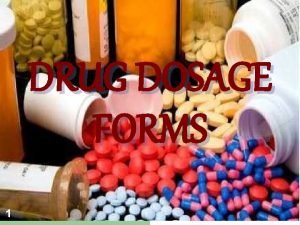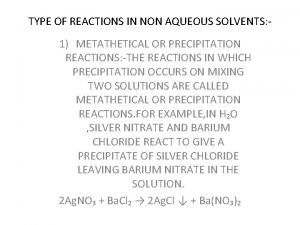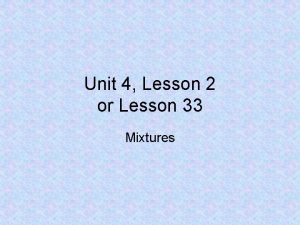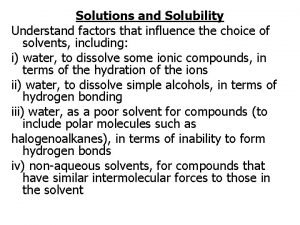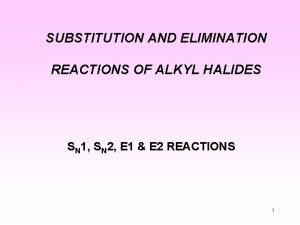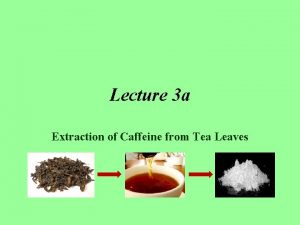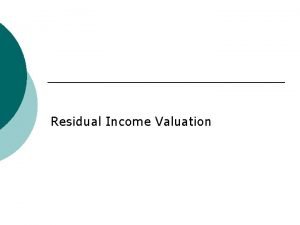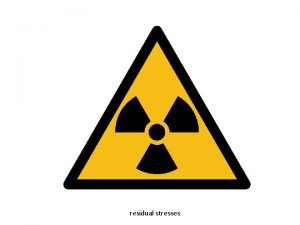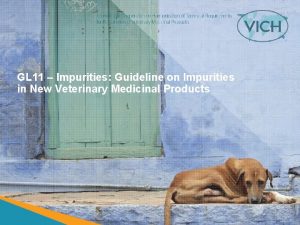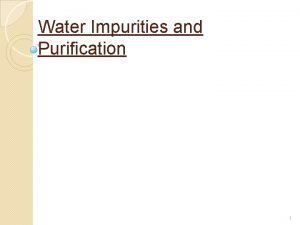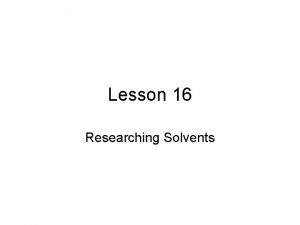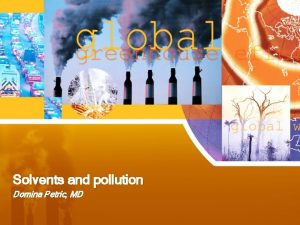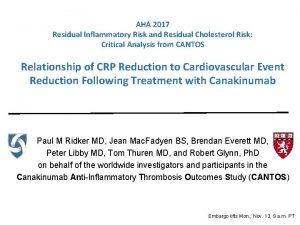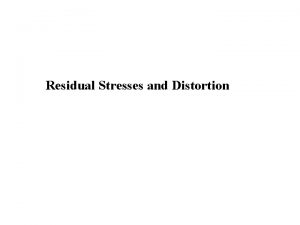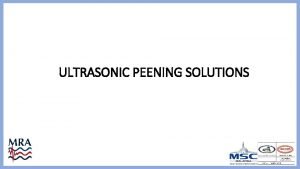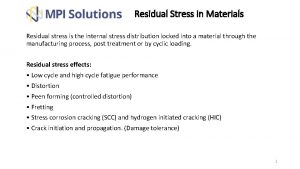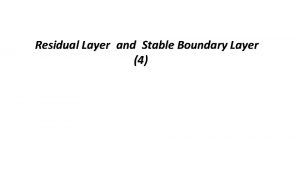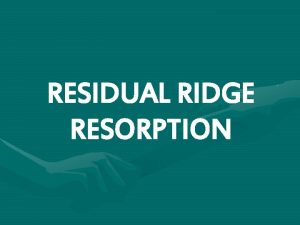GL 18 R Impurities Residual Solvents in New


















- Slides: 18

GL 18 (R) – Impurities: Residual Solvents in New Veterinary Medicinal Products, Active Substance and Excipients

Disclaimer > These slides have been provided for training purposes only. The presenter has made every attempt to ensure that they are consistent with relevant VICH guideline(s). > As always, the original Guideline(s) should be used as the primary source of information for working with regulators. 2

Quality Guidelines on impurities GL 18 is one of the guidelines which belongs to the group of guidelines dealing with impurities: > GL 10 (R) – Impurities in New Veterinary Drug Substances > GL 11 (R) - Impurities in New Veterinary Medicinal Products > GL 18 (R) – Impurities – Residual Solvents in New Veterinary Medicinal Products, Active Substance and Excipients 3

Table of contents > Introduction > Scope > Analytical Methods > Principle • Class 1 Solvents • Class 2 Solvents • Class 3 Solvents > Options for Class 2 Solvents > Options for Class 3 Solvents > Table 4: Solvents for which no adequate Toxicological Data was found > Residual Solvents Assessment – Flow Chart 4

Introduction > The objective of GL 18 is to recommend acceptable amounts of residual solvents in pharmaceuticals for the safety of target animal and residues in food animals. > There is no safe residual solvent level and so all should be removed to the “maximum extent possible” > GL 18 defines recommend limits based on safety data > Guideline is also copied verbatim to Ph. Eur. (5. 4) and USP > Based on human health assumptions which are extrapolated to vet medicines 5

Scope of GL 18 > Applies to new VMPs, active substances and excipients > Also applies to VMPs containing existing active substances • See EMEA/CVMP/423/01 -FINAL (May 2001) > Does not apply to: • Solvents used as excipients Ø IPA limited to 50 mg/day as residual solvent but can be 70% as solvent in VMP • Solvents generated as degradation products such as acetic acid from acetates Ø These are controlled as impurities and related substances 6

Analytical Methods > Residual solvents should be determined by validated analytical method. > Method is usually gas chromatography but other analytical procedure can be justified • Methods for determining solvents are described in Ph. Eur. > If only class 3 solvents are present non-specific method such as ‘loss on drying’ may be used if justified • May need adjustment for high water content products 7

Principle > Uses ‘Permitted Daily Exposure’ (PDE) to set limits for residual solvents > Four types/classes of solvents are defined • Class 1: to be avoided Ø Known/suspected human carcinogens, environmental hazards • Class 2: to be limited Ø Non-genotoxic animal carcinogens, neurotoxicity, teratogenicity • Class 3: low toxic potential Ø Low potential toxicity in man • Table 4 solvents: Ø No adequate toxicological data available Ø Often useful solvents which need further justification 8

Principle (next) > Class 1 solvents: • • Avoid if at all possible or reduce amount by processing Do not have PDE limits (unlike class 2 or 3 solvents) Limits are absolute ppm levels Provided in GL 18 table 1 Ø benzene 2 ppm, carbon tetrachloride 4 ppm Ø 1, 1, 1 -trichloroethane 1500 ppm set as environmental not safety hazard > Be aware of benzene contamination risk • Level of benzene in acetone and toluene needs to be considered and justified 9

Principle (next) > Class 2 solvents: • Limit use wherever possible and/or reduce amount by processing • PDE limits are provided in GL 18 table 2 and based on safety data Ø Acetonitrile 4. 1 mg/day Ø Hexane 2. 9 mg/day… 10

Principle (next) > Class 3 solvents: • Limit use wherever possible and/or reduce amount by processing • PDE limits 50 mg/day for all class 3 solvents (GL 18 table 3) Ø Ethanol, isopropyl alcohol, acetone. . (remember benzene contamination risk for acetone) 11

Options for Class 2 solvents > Option 1 • Assumption is that maximum daily dose of VMP is 10 g • If concentration limits for class 2 solvents are below values in table 2, then no further justification is needed • However if class 2 limits are exceeded and daily dose is less than 10 g then Option 2 is applied 12

Options for Class 2 solvents (next) > Option 2 • Amounts of class 2 solvents in each component (active substance and excipients) of the VMP are added together • Maximum daily dose of the product is used to calculate exposure Ø If exposure is less than PDE for each solvent then GL 18 is met Ø Important to assess worst case if product has multiple strengths and/or dose regimens Ø If PDE exceeded then Option 3 can be used 13

Options for Class 2 solvents (next) > Option 3 • Justification can be made for higher levels than the PDE on a case-by-case basis: Ø Correction for bodyweight of actual target species to recalculate actual PDE – 50 kg human vs 450 kg cow or 110 kg pig. Ø New toxicological data to allow new PDE to be calculated Ø Steps to reduce level of solvent shown to be impracticable and Benefit-Risk assessment to support product with residual solvent at higher level. v Dosage route: topical vs oral vs injection v Once monthly vs daily dosing v Product with higher safety risks due to other factors such as oncology VMPs. 14

Options for Class 3 solvents > Option 1 • If levels are less than 0. 5% (5000 ppm) then no further justification needed Ø Assumes daily dose of 10 g > Option 2 • Use actual daily dose to justify on PDE of 50 mg/day (as for Class 2 solvents) • Also manufacturing capability assessment to justify higher levels of class 3 solvents. 15

Solvents with no adequate toxicological data Table 4: Solvents for which no adequate toxicological data was found > These are solvents which may be useful but for which there is insufficient safety data on which to base PDE > Example of Isopropyl ether present in Active Substance and hence VMP • Safety (MSDS) provided and argument based on similarity to diethyl ether, a class 3 solvent • Level of Active Subs in final VMP gave maximum exposure <0. 03 mg/day cf ethyl ether 50 mg/day • Argument accepted by National Agencies 16

Flow chart for residual solvents assessment 17

18
 Residual dalam statistik adalah
Residual dalam statistik adalah The wringing method is used to do what to a sauce
The wringing method is used to do what to a sauce Goodrx desvenlafaxine
Goodrx desvenlafaxine Impurities in ceramics
Impurities in ceramics Trivalent and pentavalent impurities
Trivalent and pentavalent impurities The diffused impurities with
The diffused impurities with Common solvent impurities
Common solvent impurities Examples of donor impurities
Examples of donor impurities Types of respirator cartridges
Types of respirator cartridges Solution definition grade 7
Solution definition grade 7 Co solvents examples
Co solvents examples Dosage form of drug
Dosage form of drug Types of reaction in non aqueous solvents
Types of reaction in non aqueous solvents Unit 4 lesson 2 solutes and solvents
Unit 4 lesson 2 solutes and solvents Non air atau non air
Non air atau non air Types of solvents
Types of solvents Nucleophilic substitution of alkyl halides
Nucleophilic substitution of alkyl halides Monophasic liquids
Monophasic liquids Partition coefficient extraction
Partition coefficient extraction
